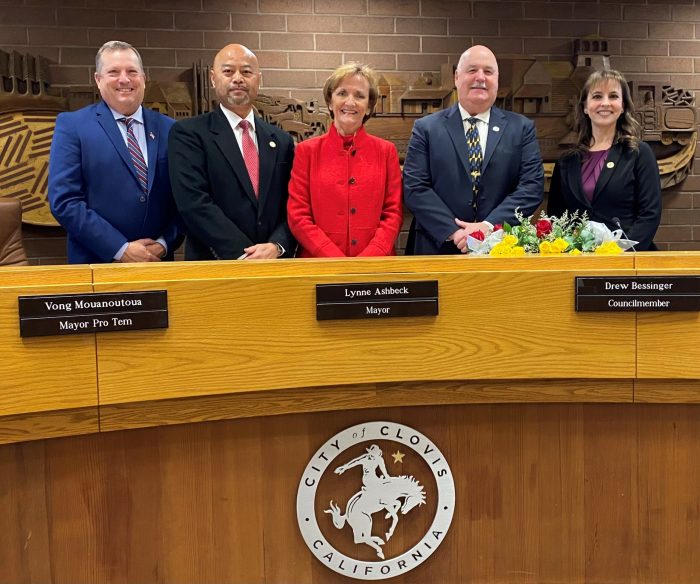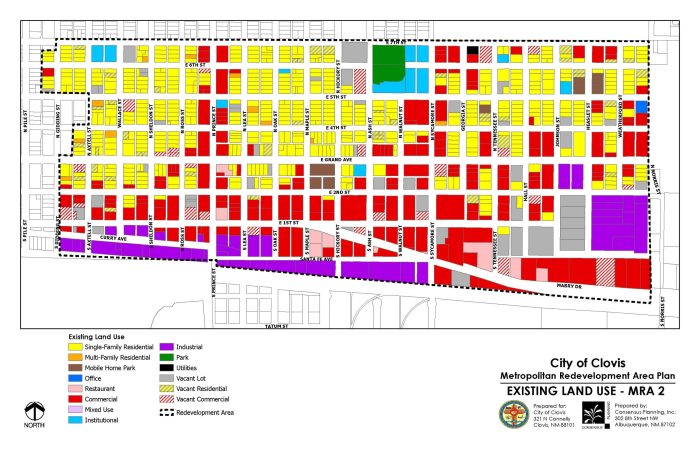Attorney demands City of Clovis form city council districts. This legal challenge throws the city into a whirlwind of debate, questioning the fairness of its current representation system. The attorney argues that the current at-large system, where all council members are elected by the entire city, disadvantages certain communities and fails to ensure equal representation.
This demand is not without precedent, as past attempts to implement districts in Clovis have sparked similar discussions. The legal arguments presented by the attorney, citing relevant case law and statutes, are sure to be meticulously examined as the city navigates this complex issue.
The potential impact of forming city council districts is a multi-faceted issue. While some believe it could lead to greater representation for marginalized communities, others worry about potential divisions and increased political polarization. The city council will have to carefully weigh the pros and cons of this change, considering its potential impact on voter turnout, community engagement, and the overall decision-making process.
Background of the Demand

The attorney’s demand for city council districts in Clovis is rooted in concerns about the fairness and representativeness of the current system. Currently, all five members of the City Council are elected at-large, meaning that every voter in the city casts a ballot for each council member.
The attorney argues that this system disproportionately favors certain groups and undermines the principle of “one person, one vote.”The attorney argues that the current at-large system creates a system where candidates can focus their campaigns on specific areas of the city, potentially neglecting the needs of other areas.
This can lead to a situation where certain groups, particularly those in minority neighborhoods, are underrepresented in the council’s decision-making process.
Previous Attempts to Implement Districts
The attorney’s demand for city council districts in Clovis is not a new issue. There have been several previous attempts to implement districts in the city, dating back to the early 2000s. These attempts have been met with resistance from some residents and council members, who argue that districts would divide the city and lead to less cohesive decision-making.
The most recent attempt to implement districts came in 2018, when a group of residents submitted a petition to the City Council calling for a ballot measure on the issue. However, the City Council ultimately voted against placing the measure on the ballot.
Legal Arguments
The attorney’s demand for the City of Clovis to establish city council districts is based on a combination of legal precedents, state and federal statutes, and the principle of equal representation. The attorney’s arguments are grounded in the fundamental right to equal representation, which is protected by the Fourteenth Amendment of the United States Constitution.
The Equal Protection Clause of the Fourteenth Amendment prohibits states from denying any person within their jurisdiction the equal protection of the laws. This principle has been interpreted by the Supreme Court to include the right to fair and equal representation in government.
Equal Representation and Voting Rights
The attorney argues that the current at-large system of electing city council members in Clovis violates the principle of equal representation by giving certain groups of voters more influence than others. This argument is supported by numerous court cases, including the landmark case of
- Reynolds v. Sims* (1964). In
- Reynolds v. Sims*, the Supreme Court held that state legislative districts must be drawn to ensure that each voter has an equal opportunity to elect representatives. This principle has been extended to apply to local elections as well.
The attorney’s arguments also rely on the Voting Rights Act of 1965, which prohibits voting practices that discriminate against minority groups. The attorney may argue that the at-large system in Clovis has a discriminatory effect on minority voters, who may be less likely to elect representatives who reflect their interests.
Potential Legal Challenges
The City of Clovis may raise several legal challenges to the implementation of city council districts.
- The City may argue that the at-large system does not violate the Equal Protection Clause or the Voting Rights Act. It may argue that the current system ensures fair representation for all residents.
- The City may challenge the attorney’s proposed district map, arguing that it is not fair or equitable.
- The City may argue that the cost of implementing districts would be too high.
Similar Cases in Other Cities, Attorney demands City of Clovis form city council districts
Similar demands for the implementation of city council districts have been successful in other cities across the country. For example, in the case of
- Harris v. City of Los Angeles*, the court ordered the city to establish districts for city council elections after finding that the at-large system violated the Equal Protection Clause. In
- League of United Latin American Citizens v. City of San Antonio*, the court ruled that the at-large system in San Antonio violated the Voting Rights Act by diluting the voting strength of Hispanic voters.
The outcome of the attorney’s demand in Clovis will likely depend on the specific facts of the case, the legal arguments presented by both sides, and the rulings of the court.
Potential Impact of Districts: Attorney Demands City Of Clovis Form City Council Districts
The implementation of city council districts in Clovis has the potential to significantly impact the city’s political landscape. Districts could alter the representation of different communities, influence voter turnout and participation, and potentially affect the city council’s decision-making process.
Representation of Different Communities
Districts can potentially enhance the representation of diverse communities within Clovis by ensuring that each district has a council member who directly reflects the interests and concerns of its residents. This could lead to more equitable representation and address concerns about underrepresentation of specific demographic groups.
For example, a district with a significant Hispanic population could potentially elect a council member who prioritizes issues related to language access, cultural preservation, and economic opportunities for Hispanic residents. This could result in more inclusive policy decisions that better serve the needs of all communities.
Voter Turnout and Political Participation
Districts can potentially increase voter turnout and political participation by creating a more intimate connection between residents and their elected officials. When residents feel that their vote directly impacts the outcome of an election, they may be more likely to participate in the political process.
Check what professionals state about How to watch Argentina vs. South Africa in the 2024 Rugby Championship online for free and its benefits for the industry.
This could lead to increased civic engagement and a more active and informed electorate. For example, a district with a high concentration of young adults might see an increase in voter turnout if they feel their concerns about affordable housing, education, and job opportunities are being addressed by a council member representing their district.
City Council’s Decision-Making Process
Districts can potentially impact the city council’s decision-making process by creating a more localized focus on issues affecting specific areas within Clovis. This could lead to a more responsive and accountable government, as council members are directly responsible to the residents of their districts.
For example, a district experiencing a high crime rate might see its council member prioritize public safety initiatives, while a district facing environmental concerns might see its council member focus on sustainable development policies. This localized approach could potentially lead to more effective solutions tailored to the specific needs of each district.
Public Opinion and Community Response
The proposed implementation of city council districts in Clovis has sparked a range of opinions and responses from residents and community groups. Some residents support the idea, believing it will enhance representation and ensure diverse voices are heard. Others oppose it, arguing that it could divide the city and lead to less effective governance.
This section will delve into the perspectives of both sides, examining the arguments for and against the implementation of districts.
Public Opinion on City Council Districts
The proposed city council districts have generated a diverse range of opinions from Clovis residents. A recent public forum revealed that a significant portion of the community is in favor of the proposed districts. They argue that districts would foster greater representation for historically marginalized communities and ensure that their concerns are adequately addressed.
They believe that districts would allow for more effective communication and engagement between council members and their constituents. Others, however, are concerned about the potential negative consequences of districts. They fear that districts could lead to increased political polarization and division within the city.
They worry that council members elected from specific districts might prioritize the interests of their constituents over the needs of the city as a whole.
Arguments for and Against City Council Districts
The debate surrounding the implementation of city council districts in Clovis is characterized by a variety of arguments both in favor and against the proposal.
Arguments in Favor
- Enhanced Representation:Districts are argued to provide more effective representation for diverse communities within the city, ensuring that their voices are heard and their needs are addressed. This is particularly important for historically marginalized communities who may not have had adequate representation in the past.
- Increased Accountability:By dividing the city into districts, council members become more accountable to the specific communities they represent. This fosters a stronger connection between elected officials and their constituents, leading to greater responsiveness and transparency.
- Greater Local Focus:Districts allow council members to focus on the specific issues and concerns of their respective communities. This localized approach can lead to more targeted and effective solutions for local problems.
Arguments Against
- Increased Political Polarization:Districts could lead to increased political polarization, as council members might prioritize the interests of their own districts over the city as a whole. This could create divisions and make it more difficult to address citywide issues.
- Less Effective Governance:Some argue that districts could lead to less effective governance, as council members may be less likely to collaborate and work together for the common good. This could hinder the city’s ability to address complex challenges.
- Reduced Citywide Perspective:Districts could lead to a diminished citywide perspective, as council members may focus solely on their own districts and fail to consider the broader needs of the city. This could result in less comprehensive and effective decision-making.
Potential Benefits and Drawbacks of Implementing Districts
The implementation of city council districts in Clovis presents both potential benefits and drawbacks that should be carefully considered.
| Benefits | Drawbacks |
|---|---|
| Increased representation for diverse communities | Potential for increased political polarization |
| Greater accountability of council members | Possibility of less effective governance |
| More focused attention on local issues | Reduced citywide perspective |
Next Steps and Potential Outcomes
The attorney’s demand for city council districts in Clovis presents a complex situation with multiple potential outcomes. The next steps and their likely impact will depend on the city’s response, the legal arguments presented, and public opinion.
Timeline for Implementation
The timeline for implementing districts, if the demand is successful, will be influenced by the legal process and the city’s response. Here’s a possible scenario:
- Initial Response:The city council will likely respond to the attorney’s demand with a formal statement or resolution, outlining their position and potential next steps.
- Negotiation and Compromise:The attorney and the city council may engage in negotiations to reach a compromise or alternative solutions. This could involve a mutually agreeable district plan, a timeline for implementation, or a commitment to further study the issue.
- Legal Challenges:If no agreement is reached, the attorney may file a lawsuit to force the city to implement districts. This process could involve discovery, hearings, and ultimately a court decision.
- District Design and Implementation:If the court rules in favor of the attorney, the city will be required to design and implement districts. This process will likely involve public input, mapping, and approval by the city council.
Outcomes of District Implementation
Implementing districts in Clovis could have several potential outcomes, both positive and negative:
- Increased Representation:Districts could potentially increase the representation of minority groups and historically marginalized communities by ensuring that their voices are heard and their interests are considered in city government decisions.
- Enhanced Accountability:By dividing the city into smaller, more manageable districts, elected officials may be held more accountable to their constituents. This could lead to more responsive and representative governance.
- Potential for Increased Polarization:The implementation of districts could potentially lead to increased polarization within the city, as different districts may have differing priorities and interests. This could make it more difficult to find consensus on important issues.
- Cost and Administrative Burden:Implementing and maintaining districts will require additional resources and administrative effort, potentially leading to increased costs for the city.
Outcomes of Not Implementing Districts
If the city council chooses not to implement districts, the potential outcomes include:
- Continued Disenfranchisement:Without districts, some communities may continue to feel underrepresented and marginalized, leading to concerns about fairness and equity in city government.
- Potential Legal Action:The attorney could pursue legal action, potentially leading to a court order requiring the city to implement districts.
- Increased Public Pressure:The city council could face continued public pressure to address the issue of representation and consider the implementation of districts.
Potential for Compromise and Alternative Solutions
While the attorney is advocating for the implementation of districts, there are other potential solutions that could address the concerns raised about representation and fairness in city government. Some possible alternatives include:
- Committees and Advisory Boards:The city council could establish committees or advisory boards with specific representation from different communities to provide input and advice on city policies and decisions.
- Public Engagement Initiatives:The city could implement initiatives to increase public engagement and participation in the decision-making process, such as town hall meetings, online forums, and surveys.
- Campaign Finance Reform:The city could consider reforms to campaign finance laws to address concerns about the influence of money in elections and promote greater fairness in political participation.
Final Summary

The attorney’s demand has ignited a passionate debate within the City of Clovis, with residents and community groups expressing their diverse viewpoints. This debate raises important questions about fairness, representation, and the best way to govern a city. As the city grapples with this complex issue, it will need to consider the legal arguments, potential impacts, and the voices of its residents.
The outcome of this debate will shape the future of Clovis and its governance, highlighting the crucial role of public participation and a commitment to finding solutions that best serve the entire community.
FAQ Corner
What is the current structure of the City of Clovis’s city council?
The City of Clovis currently has an at-large system, where all council members are elected by the entire city.
What are the potential benefits of forming city council districts?
Proponents argue that districts could lead to greater representation for marginalized communities, increase voter turnout, and foster a more localized approach to governance.
What are the potential drawbacks of forming city council districts?
Opponents argue that districts could lead to increased political polarization, undermine city-wide representation, and create divisions within the community.
 CentralPoint Latest News
CentralPoint Latest News



